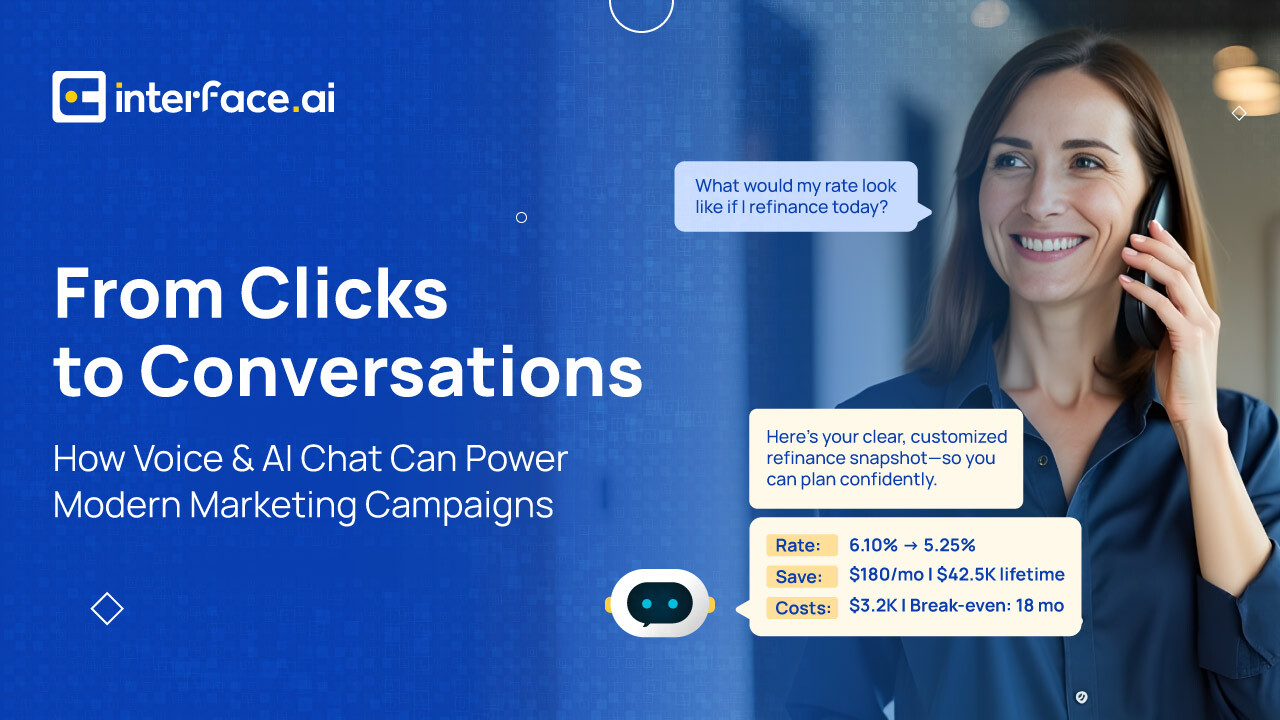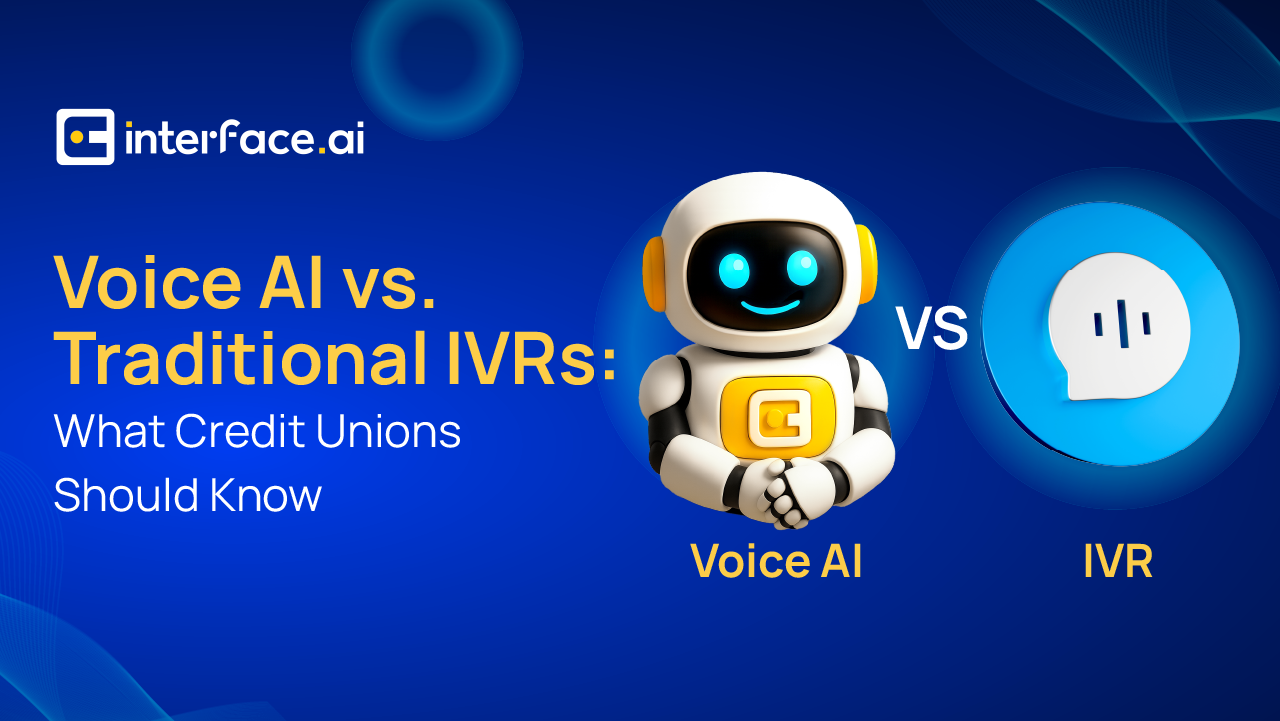
From Clicks to Conversations: How Voice & AI Chat Can Power Modern Marketing Campaigns
For years, digital marketing has revolved around one metric above all: the click. Landing pages, banner ads, email campaigns – everything was engineered to earn that single tap or press. But while clicks measure curiosity, they don’t necessarily reflect connection.
Today, customers expect more than one-way communication. They want immediacy, personalization, and the ability to engage in a way that feels human. This is where the shift from clicks to conversations is redefining the rules of marketing – especially in financial services.
The rise of conversational engagement
AI-powered chat and voice assistants have matured dramatically in just a few short years. What once felt like clunky, scripted exchanges have evolved into intelligent, context-aware interactions that can respond in real time.
For banks and credit unions, this means marketing can finally break free from static funnels. Instead of pushing prospects down a rigid path, institutions can engage them in a dialogue – answering questions, surfacing personalized offers, and guiding them seamlessly from interest to action.
Imagine a customer exploring mortgage refinancing. Rather than clicking through page after page, they can simply ask, “What would my rate look like if I refinance today?” and receive a tailored answer instantly. That’s not just marketing – it’s a relationship-building moment.
Why this matters for financial institutions
Trust is the currency of the financial world. Yet traditional marketing tactics often feel impersonal, pushing messages at customers rather than listening to them. Conversational AI flips that script.
- Personalization at scale: Instead of generic campaigns, AI chat and voice tools tailor responses based on behavior, history, and context.
- Always-on engagement: Customers no longer need to wait for business hours or sift through complex websites. Conversations happen when and where they want.
- Human-like interactions: Done right, conversational tools don’t just “respond” – they empathize, clarify, and guide.
The result? Higher satisfaction, stronger loyalty, and measurable improvements in conversion and retention.
The pitfalls to avoid
Of course, not every chatbot or voice assistant delivers on this promise. Many institutions have learned the hard way that poorly designed conversational tools can frustrate more than they help. Common pitfalls include:
- Overly scripted dialogues that feel robotic.
- Lack of integration with core systems, leading to generic or irrelevant answers.
- Ignoring compliance and privacy concerns, particularly when dealing with sensitive financial data.
The takeaway is clear: it’s not enough to simply “add a chatbot.” Success requires thoughtful design, robust training, and organizational alignment.
From campaigns to conversations
For financial marketers, the opportunity is enormous. Instead of measuring success solely in impressions and clicks, institutions can now track conversations – real, meaningful exchanges that lead to action.
And this isn’t just theory. Leading banks and credit unions are already weaving conversational engagement into their campaigns:
- Using AI chat to guide customers through credit card comparisons in real time.
- Deploying voice assistants to walk members through loan applications.
- Embedding conversational AI into email and social campaigns for instant follow-up.
Each of these approaches moves beyond “campaigns that speak at customers” to campaigns that speak with them.
Wrap-up
The financial services industry is crowded, and differentiation is increasingly difficult. Clicks may deliver short-term visibility, but conversations create lasting trust. Institutions that embrace conversational engagement now will not only keep pace with rising customer expectations but also establish a clear competitive advantage.
The future of marketing isn’t louder ads or bigger banners. It’s a quiet, intelligent voice that listens, responds, and guides – one conversation at a time.
AI Insights for Credit Union & Community Bank Leaders
Join the monthly newsletter for all the latest industry updates


